Why are bank statements used for proof of income?
Summary: Lenders, landlords, and immigration authorities sometimes accept bank statements as evidence that money actually flows into your account. However, statements are rarely enough on their own—most programs also require pay stubs, tax forms, or a bank letter. This article explains how bank statements fit into income verification, what’s legal, what’s not, and why professional formatting keeps you compliant.
Last updated: September 2025
If you’ve run into the phrase bank statements proof of income Texas on an application, you’re not alone. Whether you’re applying for a lease in Austin, a personal loan in Dallas, or a student visa in London, recent bank statements often appear on the document checklist. Statements show real deposits and spending patterns, helping reviewers confirm that income on your pay stubs or invoices is actually landing in your account.
Rules differ by purpose and jurisdiction across the US, UK, and Canada. Our team helps you package the documents you already have into a clear, compliant income‑verification packet that stands up to scrutiny without crossing legal lines.
Below is a quick glossary of terms and entities you’ll encounter throughout this guide. Knowing the lingo makes it easier to understand what reviewers and regulators expect.
Related Entities & Terms
- Bank statement, account summary, transaction ledger, deposit log
- Pay stub, payslip, earning statement, direct deposit notice
- W‑2 (US), 1099 (US), T4 slip (Canada), Notice of Assessment (NOA, Canada), P60/P45/SA302 (UK)
- Loan underwriting, tenant screening, mortgage pre‑approval, visa application
- Consumer Financial Protection Bureau (CFPB), Federal Trade Commission (FTC), Internal Revenue Service (IRS)
- Financial Conduct Authority (FCA, UK), Financial Consumer Agency of Canada (FCAC), Canada Revenue Agency (CRA)
- Anti‑Money Laundering (AML) rules, Know Your Customer (KYC), fraud prevention
- Document redaction, PDF formatting, electronic statements, metadata removal
If you’re unfamiliar with these terms, don’t worry—we’ll unpack them throughout the article. Our compliance‑first approach means we organize and format your documents but never fabricate numbers, dates, or payees. For a deeper dive into when bank statements work and when they don’t, read our related guide on bank statements as proof of income.
Are bank statements legally accepted in Texas and beyond?
Summary: Yes—but acceptance depends on jurisdiction and purpose. If you’re asked for “bank statements proof of income Texas,” know that statements are typically considered supporting evidence alongside pay stubs and tax records. The UK and Canada have specific format and timing rules, and altering statements is illegal under state and federal law.
Bank statements are a supporting proof of income, not a stand‑alone substitute. In the United States, the U.S. Department of the Treasury’s Homeowner Assistance Fund notes that applicants may submit pay stubs, W‑2s, 1099s, tax filings, and bank statements demonstrating regular income as supporting documents. Lenders and landlords in Texas usually cross‑check these statements against pay stubs or employment letters. Under Texas Penal Code §32.21, forging a commercial instrument—which includes altering checks, contracts, or bank statements—is a felony. Additionally, false statements made to influence a federal lender can trigger penalties of up to 30 years in prison and a US$1 million fine.
In the United Kingdom, bank statements are accepted as evidence of funds for Student and Child Student visas. Your statement must cover a 28‑day period; the closing balance must be within 31 days of your application; and it must show your name, the bank’s name, and the balance. Canada’s Express Entry program requires an official letter from your bank listing contact information, account numbers, opening dates, current balances, and six‑month average balances. Failing to meet these documentation rules can lead to delays or refusals.
For renters and borrowers, there’s no statewide law in Texas prohibiting landlords or lenders from requesting statements. However, privacy rules like the Fair Credit Reporting Act (FCRA) and Fair Debt Collection Practices Act (FDCPA) require that requests be relevant and that sensitive data is protected. In the UK, the Data Protection Act and GDPR regulate how personal banking data can be collected and stored. In Canada, the Personal Information Protection and Electronic Documents Act (PIPEDA) serves a similar role.
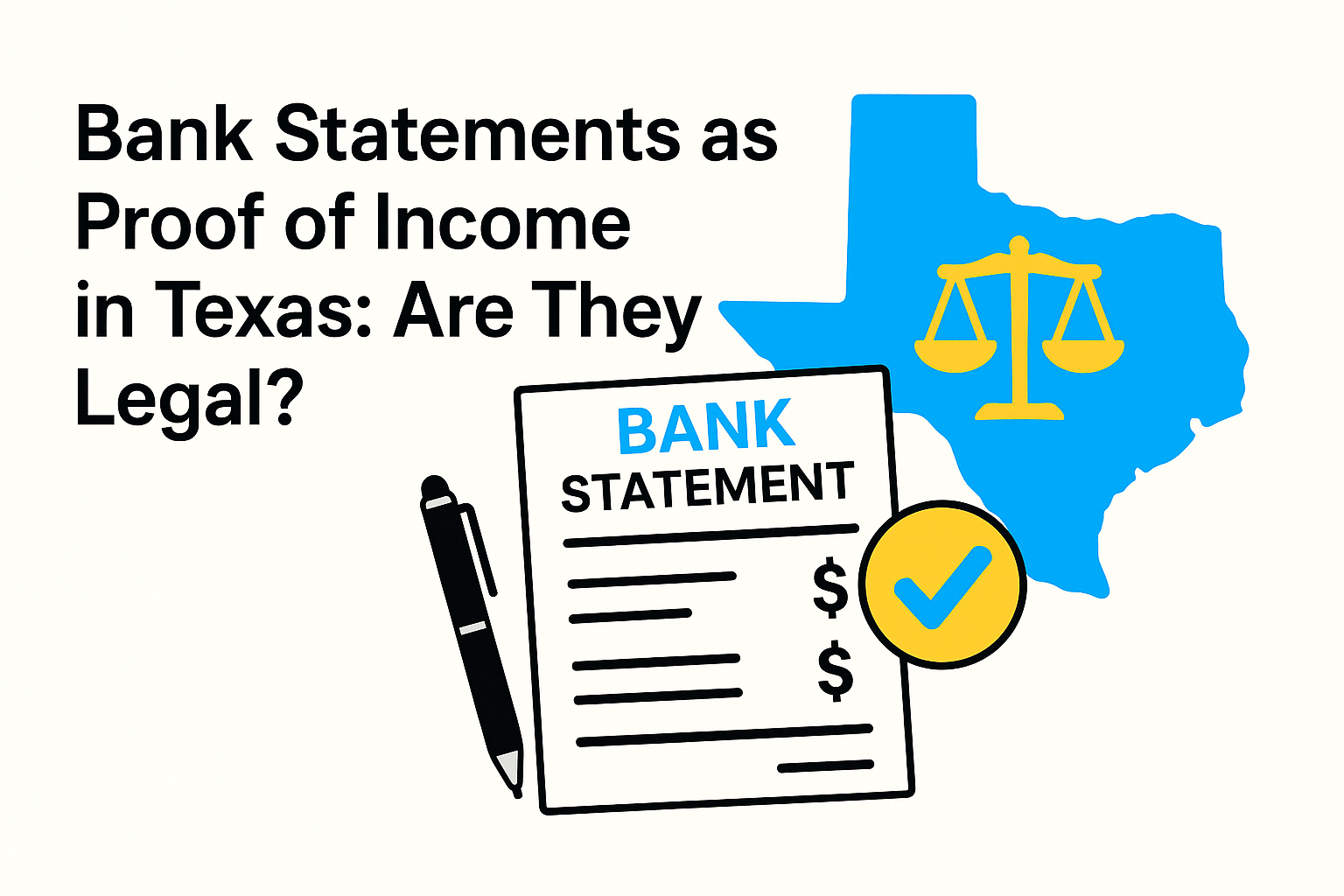
Because rules vary by program and region, pair bank statements with other evidence. In our overview of cross‑checking pay stubs and bank statements, we explain why multiple documents create a consistent narrative. When statements show regular deposits that match your pay stubs or invoices, underwriters can quickly verify income and move your application forward.
Which bank statement edits are allowed?
Summary: You may improve legibility, privacy, and formatting as long as you don’t change facts. Examples include redacting account numbers, highlighting deposits, converting file formats, or adding page numbers. These updates make statements easier to review without altering balances, dates, or payees.
Bank statements often contain sensitive information that reviewers don’t need. You can:
- Redact personal identifiers: Mask digits of your account number or address. Leave the last four digits visible so reviewers can match statements to your pay stubs or ID.
- Improve legibility: Adjust brightness or contrast, straighten skewed scans, and split or merge pages so the running balance is easy to follow.
- Add or remove metadata: Remove digital signatures and metadata that reveal device details; add bookmarks or page numbers for easier navigation.
- Convert formats: Export online banking statements into PDF/A or merge multiple monthly statements into one consolidated file.
- Provide cover notes: Add a separate note explaining any legitimate anomalies (e.g., large one‑time deposits, refunds, or transfers) so underwriters understand the context.
These edits are about presentation, not fabrication. You must not change transaction amounts, dates, or payees. Our proof of income editing service focuses on formatting, redaction, and packaging, ensuring that your documents remain authentic while meeting underwriters’ expectations.
What bank statement edits are illegal and risky?
Summary: Any alteration that misrepresents facts—such as changing balances, modifying dates, adding fake deposits, or deleting legitimate transactions—is illegal. In Texas, forging a commercial instrument like a bank statement is a felony, and under U.S. federal law, making false statements to a lender can bring severe fines or prison terms.
“Editing” a statement to inflate income or conceal debt crosses the line from formatting into fraud. Illegal changes include:
- Altering amounts: Increasing deposits or balances to meet income requirements.
- Changing dates: Adjusting the transaction or statement period to show money arriving sooner or staying longer.
- Adding fake transactions: Inserting fictional paychecks, refunds, or transfers.
- Deleting transactions: Removing withdrawals, overdrafts, or bounced checks to make finances appear healthier.
- Falsifying payee names: Changing who sent or received the funds to match your narrative.
Texas law classifies the forgery of a writing with intent to defraud or harm another as a state‑jail felony; if the document is a check or other commercial instrument, it escalates to a third‑degree felony. On the federal level, 18 U.S.C. § 1014 prohibits knowingly making false statements to influence federally related mortgage lenders; violations can result in up to US$1,000,000 in fines or up to 30 years in prison. These penalties apply even if you never receive the loan or credit you applied for.
The United Kingdom’s Fraud Act 2006 and Canada’s Criminal Code impose similar penalties for fraud and forgery. Beyond criminal liability, misrepresentations on immigration or loan applications can lead to bans, deportation, civil lawsuits, and credit damage. To stay compliant, stick to formatting and explanation—not fabrication. Our quick Compliance Snapshot below recaps what’s acceptable and what isn’t.
Compliance Snapshot
Allowed edits: Redacting account numbers or addresses; adding page numbers or bookmarks; improving clarity; including explanatory cover notes. Illegal alterations: Changing deposit amounts or balances; adjusting dates; inserting fake transactions; removing legitimate transactions; altering payee names. If in doubt, leave the numbers as they are and add a note.
When do you need professional bank statement formatting?
Summary: Professional formatting helps when accuracy and clarity make or break your application. This includes rental applications, auto loans, small business loans, immigration programs, and self‑employed scenarios. Clean, consistent statements paired with pay stubs or tax forms speed up reviews and reduce follow‑up questions.
Here are common scenarios where our Texas clients ask for help:
- Renting an apartment: Landlords in Houston and San Antonio often ask for the most recent two or three months of statements. If your deposits are irregular, we pair your statements with pay stubs or employment letters and add notes explaining one‑off transfers. Learn more about why landlords look for red flags and how to avoid them.
- Auto or personal loans: Lenders want to see that your pay hits your account and that your balance can support repayments. We organize your statements alongside W‑2s or 1099s and highlight steady income streams. Some lenders also request a 12‑month transaction history; we merge statements into one file and paginate it for easy review.
- Mortgage pre‑approval: Many underwriters validate income and reserves before issuing a pre‑approval. Consolidated statements, clear pagination, and matched payroll deposits reduce conditions and resubmissions.
- SBA loans and small‑business credit: The U.S. Small Business Administration reviews both business and personal statements. We help entrepreneurs assemble separate packets—business checking, merchant deposits, invoices, and tax returns—so the underwriter sees a clear flow of income.
- Student and visitor visas: In the UK, you need statements showing funds held over 28 days. For Canadian Express Entry, you need a bank letter with account numbers and average balances. We ensure your documents meet the length, format, and translation requirements before submission.
- Self‑employed income verification: Freelancers and gig workers often lack traditional pay stubs. By combining invoices, payment processor reports, and bank statements, we build a consistent proof‑of‑income package. Our article on proving income without a traditional job offers additional tips.
- Public benefits and hardship programs: Assistance programs may ask for statements to confirm eligibility and income stability. Clear, complete documents avoid delays and re‑verification requests.
In every case, our role is to package what already exists. We do not add fictitious paychecks or alter your balances. Instead, we organize, annotate, and format so your real income story is easy for reviewers to follow.
How does our process work?
Summary: Our workflow is designed for speed and compliance. You upload your documents, we reconcile them, apply formatting and redaction, create a cover note, and deliver a polished package—often within one business day.
Here’s what to expect when you request our bank statement formatting service:
- Intake: You securely upload your statements, pay stubs, tax forms, and any supporting documents. We recommend at least three months of statements for income verification and six months for certain visa programs.
- Reconciliation: Our team compares deposits against pay stubs, invoices, or W‑2s. We flag any discrepancies and may ask you for clarification so your narrative is consistent.
- Formatting and redaction: We apply legibility improvements, paginate the file, redact sensitive information, and ensure the running balance flows correctly across pages. When requested, we convert PDFs to accessible PDF/A or merge monthly statements into one file.
- Cover note: We draft a short note explaining any unusual transactions (e.g., a tax refund or bonus payment) and listing the supporting documents provided. This helps underwriters quickly understand your financial picture.
- Delivery: You receive a final PDF package along with recommendations about which documents to submit for your specific goal. Turnaround time is usually 24 hours or less for standard requests.
We maintain strict boundaries: we do not create or alter financial records, only improve their presentation. If you need clarity on pricing, visit our pricing page or contact our team for a quote.
What’s on the compliance checklist?
Summary: A few simple checks can transform your bank statements from messy to professional. Make sure you have the right time period, match deposits with pay stubs, redact sensitive information, and include supporting forms. The list below helps you stay organized.
- Gather the correct period: For rentals and consumer loans, provide the last 2–6 months of statements. For UK Student visas, ensure at least 28 consecutive days; for Canadian immigration, obtain a bank letter covering the last six months.
- Match deposits to income records: Cross‑check each payroll deposit against your pay stub or invoice. Attach W‑2s, 1099s, T4s, or NOAs so reviewers can reconcile totals.
- Redact sensitive data: Remove full account numbers, Social Security or SIN numbers, home addresses, and personal contacts. Leave enough information to prove ownership.
- Check continuity: Ensure page numbers, running balances, and transaction dates flow logically. Provide all pages—even blank ones—to avoid suspicion.
- Explain anomalies: Use a cover note to describe irregular deposits, large transfers, or one‑time expenses (e.g., car purchase or tax refund).
- Include supporting forms: Attach pay stubs, employment letters, tax returns, or letters of explanation. In Canada, include the official bank letter with contact information and six‑month averages.
- Label and organize files: Use descriptive file names (e.g., “Jones_Bank_Statement_Jan‑Mar2025.pdf”) and combine monthly statements into a single document when allowed.
- Download official e‑statements: Whenever possible, pull statements from your bank’s portal rather than screenshots. They’re clearer and more widely accepted.
Following this checklist reduces questions and helps reviewers process your application faster. For a deeper dive, see our 5‑point checklist for bank statement red flags.
What red flags cause statement rejections?
Summary: Underwriters look for patterns that suggest risk: inconsistent deposits, mismatched names, missing pages, visual alterations, and unregulated institutions. Understanding these red flags helps you prepare documents that sail through review.
Watch out for these common issues:
- Inconsistent deposit patterns: Payroll deposits should occur on a regular schedule. Sudden spikes or gaps in income may prompt questions.
- Mismatched names or addresses: The name and address on the statement should match your ID and application. Any discrepancy can halt the process.
- Missing pages: Lenders expect to see every page, including those labeled “This page intentionally left blank.” Missing pages raise suspicions of redaction or deletion.
- Altered fonts or formatting: If the typography or layout changes mid‑statement, reviewers may assume the document has been edited. Stick to a consistent style or use a cover note if the bank changed its format.
- Unregulated institutions: Statements from unlicensed banks, prepaid debit cards, or digital wallets may not count as proof of income. Use accounts from recognized banks or credit unions.
- High debt and overdrafts: Repeated overdraft fees, returned checks, or large credit card balances signal financial stress. While you can’t change these facts, you can provide context or demonstrate offsetting assets.
- Screenshot submissions: Some reviewers reject blurry screenshots from mobile apps. Provide native PDFs or high‑quality scans whenever possible.
Our article on bank statement red flags offers more detail and a printable checklist. Addressing these issues up front reduces the risk of delays or denials.
Where can you find official guidance and further resources?
Summary: To protect yourself from misinformation, rely on official sources. Government regulators publish detailed guidelines about acceptable documentation, income verification, and data privacy. We’ve curated the most relevant resources below.
United States: The U.S. Treasury’s Homeowner Assistance Fund lists pay stubs, W‑2s, 1099s, tax filings, and bank statements as acceptable supporting documents. Texas Penal Code §32.21 outlines the criminal penalties for forging financial documents, while the federal statute 18 U.S.C. § 1014 penalizes false statements to lenders with fines and imprisonment. For consumer‑credit rights, see the Consumer Financial Protection Bureau (CFPB).
United Kingdom: The UK Visas and Immigration guidance on financial evidence explains that bank statements can be paper or electronic and must cover 28 consecutive days; they must be no more than 31 days old and show your name and the bank’s name. Regulatory oversight is provided by the Financial Conduct Authority (FCA). More details on privacy rights can be found through the Information Commissioner’s Office.
Canada: Immigration, Refugees and Citizenship Canada (IRCC) requires a bank letter on official letterhead for Express Entry applications. The letter must list the bank’s contact information, your name, account numbers, the date each account was opened, current balances, and the average balance for the past six months. For consumer protection rules, consult the Financial Consumer Agency of Canada (FCAC).
For more internal guidance, you may find these articles helpful:
- Bank Statements as Proof of Income: When They Work & Don’t
- Cross‑Checking Pay Stubs and Bank Statements for Income
- Bank Statement Red Flags: 5‑Point Checklist
- How to Prove Income Without a Traditional Job
Still unsure which documents you need? Feel free to contact our team for personalized assistance.
Frequently asked questions
Summary: Quick answers to the most common questions we hear about using bank statements as proof of income.
Are bank statements accepted as proof of income in Texas?
Yes. Landlords and lenders in Texas often request bank statements, but they expect them to accompany pay stubs, W‑2s, or tax returns. Federal and state laws require that statements be genuine; altering them is illegal.
How many months of bank statements do I need?
It depends on the purpose. Rentals and personal loans usually require two to six months. UK Student visa applicants must show funds held for at least 28 days and provide evidence no more than 31 days old. Canadian Express Entry applicants need a bank letter including account details and a six‑month average.
Is it illegal to edit my bank statements?
Editing for formatting and privacy—such as redacting account numbers or improving legibility—is allowed. Changing amounts, dates, payees, or adding fake transactions is illegal under Texas Penal Code §32.21 and U.S. federal law.
What if I’m self‑employed and don’t have pay stubs?
Self‑employed applicants can provide invoices, payment processor records, and bank statements showing deposits. Combining these with tax returns or T4 slips creates a reliable proof‑of‑income package. Professional formatting helps highlight consistent income streams.
Can I use statements from an online bank or digital wallet?
Many lenders accept statements from regulated online banks, but they may reject statements from unlicensed platforms or prepaid debit cards. Ensure your institution is federally insured (FDIC, FCA, or CDIC) and be prepared to provide additional proof if asked.
Need accurate, reliable financial documents fast? Contact FinancialDocsProvider.com now.

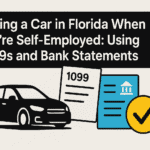

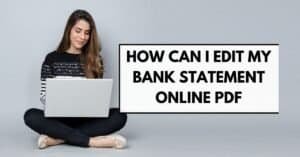
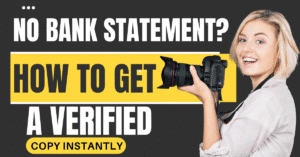
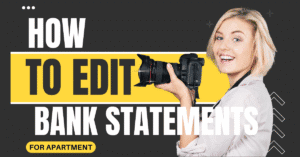
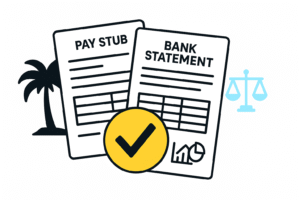
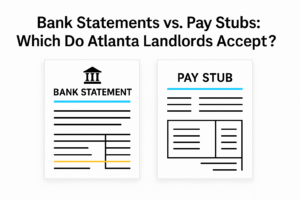
Add comment